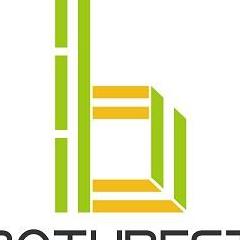When building a beautiful, long-lasting, and sustainable outdoor deck, material selection is everything. Among the top choices for modern decking projects is bamboo—specifically FSC-certified bamboo harvested from responsibly managed forests. Homeowners looking for a material that combines strength, durability, and eco-consciousness are turning to high-density bamboo decking as a smarter alternative to traditional wood-plastic composites (WPC) and tropical hardwoods.
One of the most important factors in choosing bamboo decking is the density of the boards. Density affects everything from durability and water resistance to how the deck feels underfoot and how it performs in extreme weather. This article explores why density matters, what the ideal range is, and how high-density bamboo—especially at 1250 kg/m³—delivers unmatched performance for outdoor living spaces.
Why Density Matters in Bamboo Decking
Density is a measure of how tightly packed the material’s fibers are within a given volume. In decking, higher density generally means:
- Greater strength and impact resistance
- Better waterproof performance
- Higher resistance to warping, cupping, and cracking
- Improved insect and fungal resistance
- Longer lifespan with reduced maintenance
Low-density materials, including many softwoods and basic WPC boards, tend to absorb water more easily, leading to swelling, mold, and eventual decay. They may also warp under UV exposure and temperature fluctuation.
Bamboo, when processed correctly, can exceed the density of even the hardest tropical hardwoods—making it a top-tier material for outdoor applications.
Understanding FSC Bamboo and Its Environmental Benefits
Not all bamboo is created equal. Decking made from FSC-certified bamboo comes from forests managed according to strict environmental, social, and economic standards. This certification ensures:
- Sustainable harvesting of bamboo culms at the optimal age (typically 4–6 years)
- Protection of biodiversity and local ecosystems
- Fair labor practices
- Traceability from forest to factory
Unlike hardwoods that take decades or even centuries to mature, Moso bamboo regenerates rapidly, reaching full height in just a few months and maturing within 4–6 years. This fast growth cycle makes bamboo one of the most renewable building materials available.
Pairing sustainability with high performance, FSC bamboo decking offers a guilt-free alternative that doesn’t sacrifice quality or durability.
Comparing Bamboo to WPC (Wood-Plastic Composite)
Wood-Plastic Composite is often marketed as an eco-friendly option, but its environmental credentials are mixed. While WPC does reduce the use of virgin timber, it typically includes petroleum-based plastics and chemical additives that are difficult to recycle and may degrade under UV exposure.
Here’s how high-density bamboo decking stacks up against WPC:
| Feature | High-Density Bamboo | WPC |
|---|---|---|
| Density | Up to 1250 kg/m³ | 500–800 kg/m³ |
| Eco-Friendliness | Fully natural, FSC certified | Contains plastic binders |
| Recyclability | 100% biodegradable or recyclable | Difficult to recycle |
| Heat Resistance | Excellent | Can become hot and soft |
| Strength and Hardness | Very high | Moderate to low |
| Natural Appearance | Real bamboo grain | Plastic-like surface |
| Resistance to Mold & Mildew | Excellent with treatment | Moderate; can grow mold |
With its superior density and natural composition, bamboo offers a more authentic and environmentally responsible decking solution.
Why 1250 kg/m³ Makes a Difference
Standard bamboo has a natural density of around 600–700 kg/m³. But through a process called strand weaving, fibers from mature Moso bamboo are shredded, treated, and compressed under extreme pressure and heat. The result is a board with a density of up to 1250 kg/m³—outperforming traditional hardwoods like Ipe, Merbau, and Cumaru.
Benefits of ultra-high-density bamboo decking include:
1. Waterproof Performance
The tight fiber structure and resin infusion dramatically reduce absorption, making the boards highly resistant to water damage. This is essential for areas with heavy rain or near pools, spas, and coastal environments.
2. Deformation Resistance
At this density, bamboo decking resists:
- Warping from sun and heat
- Cupping from uneven moisture exposure
- Expansion and contraction with seasonal changes
This means the deck remains flat, tight, and safe over time.
3. Superior Load-Bearing Capacity
High density also improves the structural strength of the decking. This makes it ideal for high-traffic areas, balconies, or commercial spaces like resorts, cafes, and boardwalks.
4. Longevity with Minimal Maintenance
With regular cleaning and occasional refinishing, high-density bamboo decking can last 20–30 years, even in harsh outdoor conditions. The smooth, hard surface also resists scratching and denting better than softer decking options.
Finding the Right Fit for Your Home
When considering bamboo decking, homeowners should ask:
- Is it FSC certified? This ensures environmental responsibility and material quality.
- What is the board’s density? Aim for 1100–1250 kg/m³ for best results.
- Is it strand woven? This process dramatically increases performance.
- What surface treatments are applied? UV protection, anti-mold, and waterproof coatings extend durability.
A high-density bamboo deck not only looks beautiful, with its rich grain and natural colors, but also performs under pressure—literally. It’s a smart investment for anyone seeking a low-maintenance, eco-friendly, and long-lasting decking solution.
Final Thoughts
Choosing the right density isn’t just a technical decision—it’s about ensuring your bamboo deck can withstand years of use, weather, and wear. FSC-certified, strand woven bamboo with a density of 1250 kg/m³ offers a rare combination of sustainability, strength, and elegance. For homeowners who value both performance and planet, it’s a choice that truly stands the test of time.




